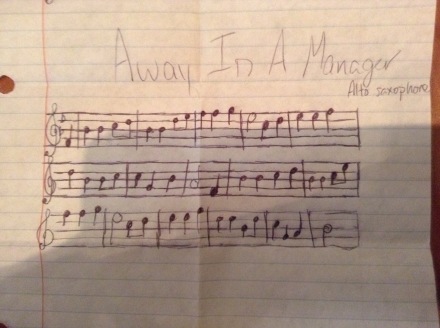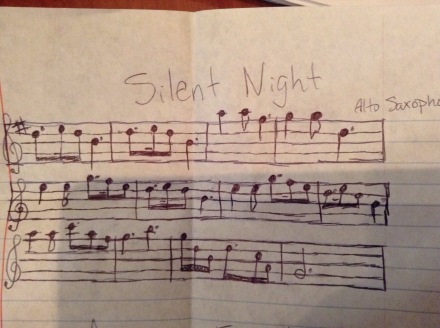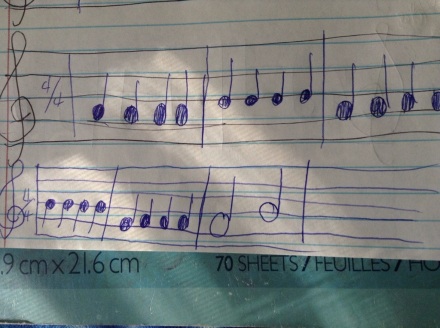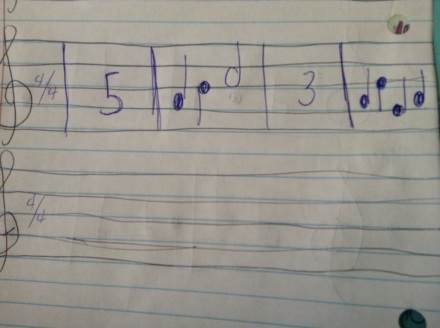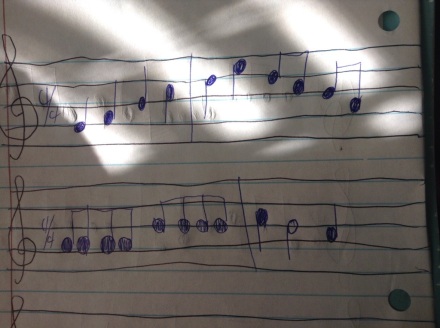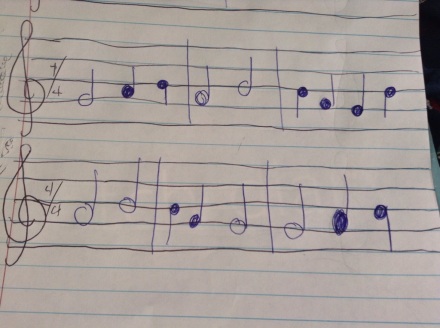Yesterday, for the 10 minutes I was in the room with the other saxophones they did pretty good. My saxophone was being fixed. But Taylor and Andrew worked on being together and getting the right notes. Then I went out to the main room and listened to the brass group and percussion. They actually played together, which was really good. They really needed to work on keeping the beat up and together. The percussion was either always ahead or the brass group was always behind. Some percussion people would sit around on their phones, until they worked with the brass players. Other then that everybody did good.
Uncategorized
Away In A Manger
Silent Night
Key Signatures
When you have all flats name the second to last flat in your key signature and that will be your key. When you have sharps in your key signature, you name the note that is a half step higher above the last sharp.
Christmas Music
This year for are Christmas concert we have at least 7 pieces we are playing. Us Tenor saxophones are doing pretty good with all the pieces. The only problem we are having is remembering the key changes. But my music is filled with a bunch of marks, that is helping me and Adam. That is only problem us Tenors are having. Other then that I really like are Christmas music.
John Philip Sousa
John Philip Sousa wrote the Stars and Stripes around, 1896. From this song he gained the nickname of “The March King”. He formed the group concert and military band called the Sousa’s band. Mr. Sousa got great reviews on this song. Every time Mr. Sousa would play this song, people would stand up and cheer, or he would bring tears to people eyes. Mr. Sousa song is considered the first march ever written. Mr. Sousa used Stars and Stripes Forever during the Spanish-American War.
